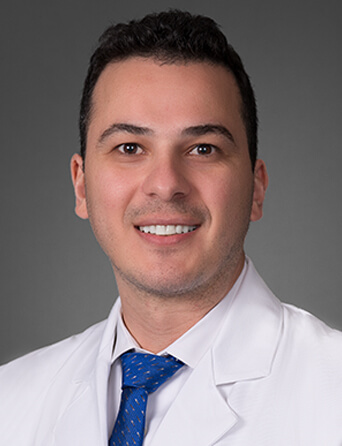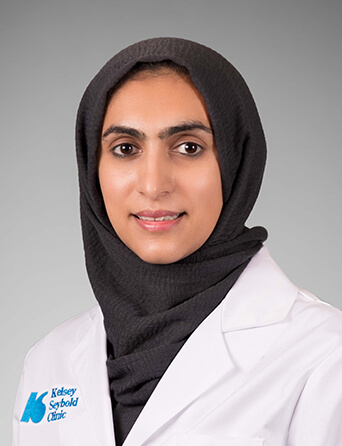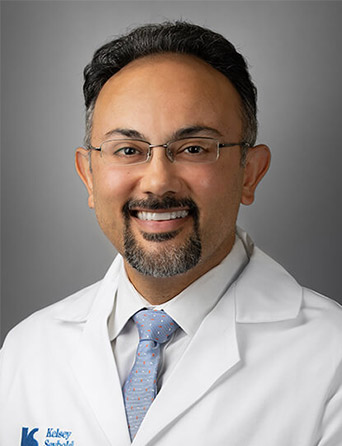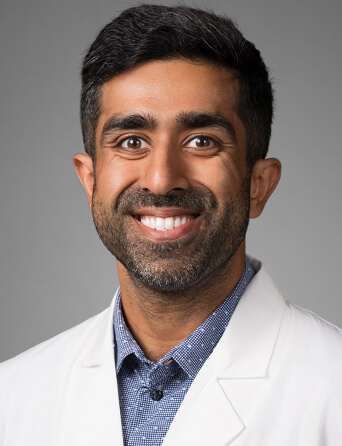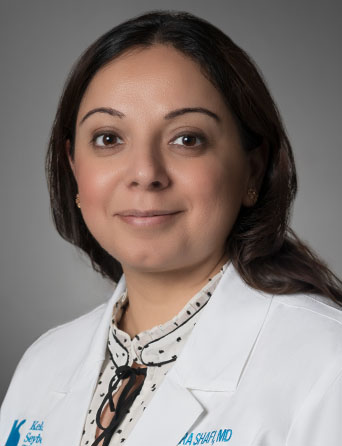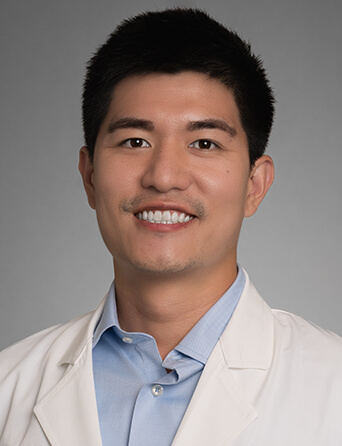Join Our eNewsletter!
Subscribe to our monthly newsletter to receive encouraging advice to help you lead a healthy lifestyle.
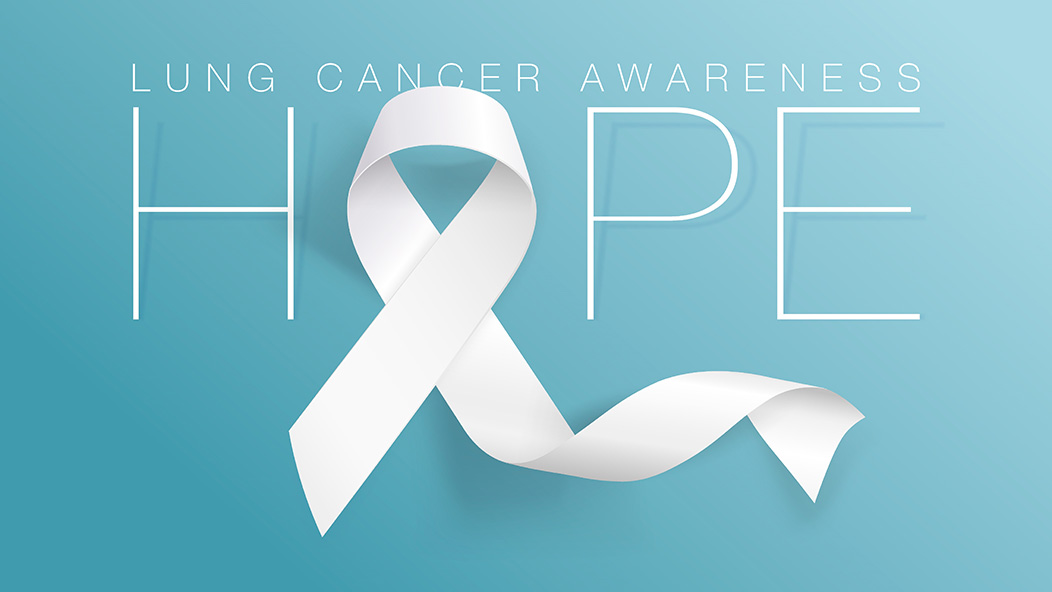
Lung Cancer: Risk Factors, Warning Signs, and Treatment
Lung cancer is the second-most-commonly occurring cancer (other than skin cancer). The American Cancer Society estimates that this year 236,740 new cases of lung cancer will be diagnosed in the United States and that approximately 130,180 deaths will be attributed to lung cancer. Lung cancer accounts for almost a quarter of all cancer deaths, making it the leading cause of death from cancer.
As with all cancers, lung cancer begins to develop when the cells in the body start to grow out of control. Lung cancer typically originates in the cells lining the bronchi, which are the air passages that diverge from the windpipe.
Types of Lung Cancer
There are two main forms of lung cancer: non-small cell lung cancer (NSCLC) and small cell lung cancer (SCLC), with NSCLC accounting for 80% to 85% of lung cancer cases.
Within NSCLC, there are common subtypes that are classified by the type of lung cells they affect:
- Adenocarcinoma - This type of cancer occurs mainly in people who are or have been smokers, but it's also the most common cancer in those who have never smoked.
- Squamous cell carcinoma - This type of cancer starts in the flat cells that line the inside of the lungs' airways and is often associated with a history of smoking.
SCLC, which is also known as oat cell cancer, is responsible for 10% to 15% of all lung cancers. It tends to grow and spread faster than any form of NSCLC. SCLC tends to respond well to chemotherapy and radiation therapy, but for most people with SCLC, the cancer reoccurs at some point.
There are other types of lung tumors, but they are much less common.
Risk Factors
While people who smoke or have smoked tobacco are much more likely to develop lung cancer, it can occur in people who have never smoked. However, it's rare for someone to develop SCLC if they've never smoked. The risk of developing lung cancer increases for smokers depending on how long and how often they've smoked.
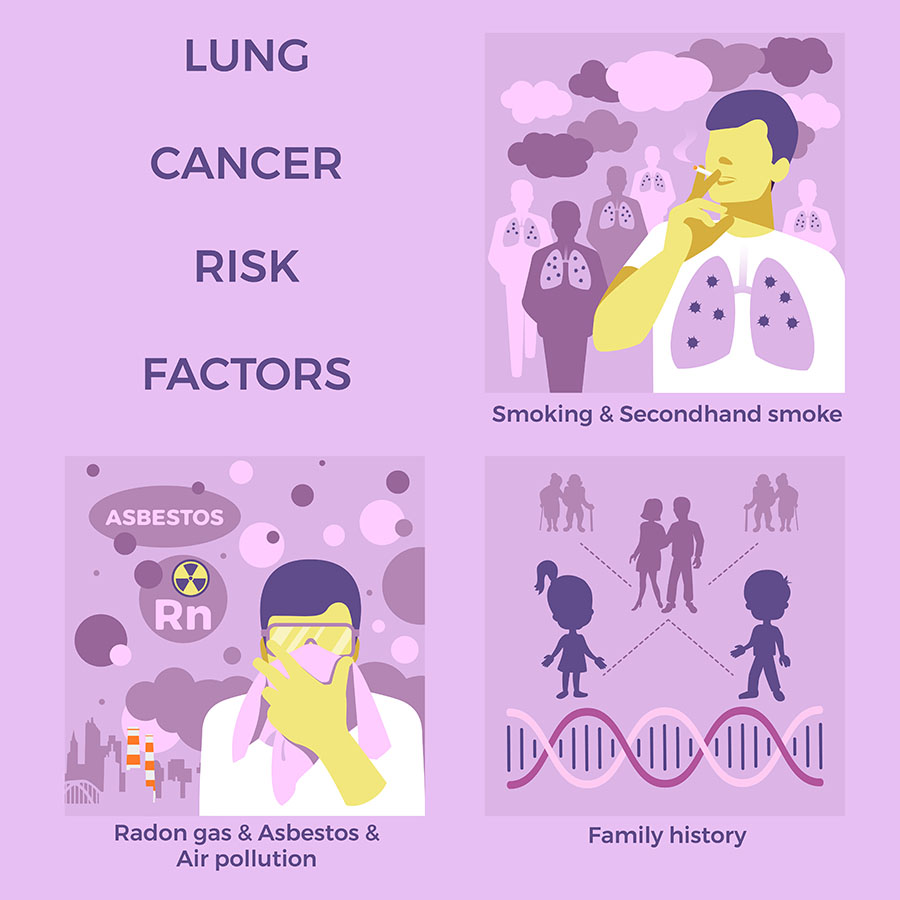
Other risk factors include:
- Exposure to secondhand smoke. More than 7,000 lung cancer related deaths are attributed to secondhand smoke inhalation over an extended period of time.
- Exposure to radon. Radon is a naturally occurring radioactive gas that can be found in many homes and other buildings, especially in basements. While outdoor exposure is rare, indoor exposure can introduce lungs to concentrated levels of radiation. According to the EPA, radon is the second-leading cause of lung cancer in the U.S. after smoking.
- Exposure to asbestos. Many people who work or have worked in environments such as mines, mills, shipyards, and textile plants have been exposed to asbestos. Mesothelioma is a type of lung cancer that's caused by exposure to large amounts of asbestos. Government regulations have significantly reduced the use of asbestos, but it's still in many homes and buildings and poses a threat when those buildings are demolished and asbestos is released into the air.
- Exposure to other cancer-causing agents. People who come into contact with carcinogens such as uranium, arsenic, silica, coal products, mustard gas, and diesel exhaust in the workplace have an increased risk of lung cancer.
- Family history of lung cancer. If a person has a close relative who has had lung cancer, the chances they'll also develop it are slightly higher. However, it's unclear if the connection is genetic or due to environmental factors, such as secondhand smoke from a family member who's a smoker. It's estimated that only 8% of cases worldwide are due to a genetic predisposition to lung cancer.
- Air pollution. Although not common, people who live in large cities that have consistently high levels of air pollution have a slightly higher risk of developing lung cancer. Experts estimate that 5% of all lung cancer deaths can be attributed to air pollution.
Symptoms and Detection
As with most cancers, when lung cancer is detected early, it's more likely to be treated successfully and less likely to result in death.
Unfortunately, in most cases, lung cancer doesn't have symptoms until it has progressed and spread, which is why regular screening for those at high risk is so important.
A test called a low-dose CT scan (LDCT) can help find abnormal areas in the lungs that may indicate cancer. While X-rays were used for screening in the past, it's been determined that they're not effective for revealing potentially cancerous areas early on.
When symptoms do appear, they are oftentimes attributed to other, less serious causes, such as a respiratory illness.
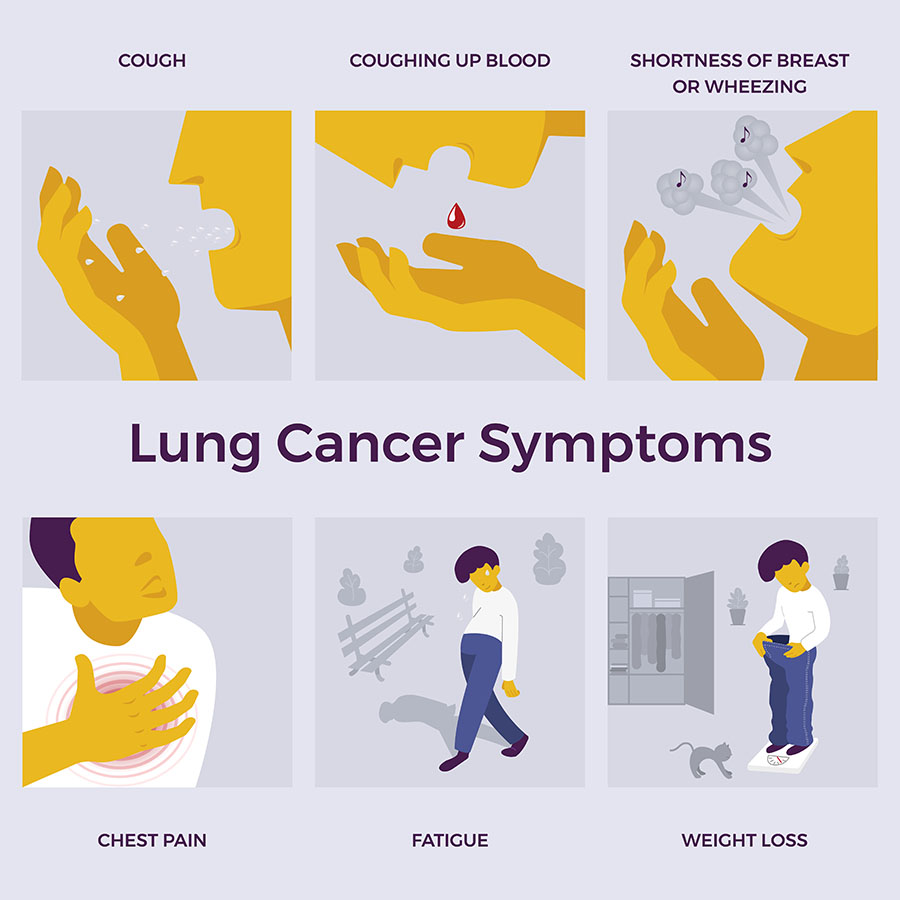
Early symptoms may include:
- A persistent cough that doesn't go away or becomes worse over time
- Respiratory infections that worsen or are recurring
- Coughing up phlegm that's rust colored or bloody
- Chest pain that gets worse with exertion, breathing deeply, coughing, or laughing
- Loss of appetite or unexplained weight loss
- Shortness of breath
- Sounding hoarse
- Unexplained tiredness or feeling weak
- Wheezing
At the later stages when lung cancer has spread to other parts of the body, symptoms may include:
- Bone pain - When the cancer has spread to the bones, it can feel like muscle pain, but it often worsens at night and increases with movement. The areas where bone pain is commonly felt is in the back and hips.
- Nervous system changes - When the cancer has spread to the brain, it can cause headaches, weakness or numbness in the arms or legs, dizziness and balance problems, and seizures.
- Yellowing of the skin or eyes - When the cancer has spread to the liver, it can cause jaundice.
- Swollen lymph nodes - When the cancer has spread to the lymph nodes, it can cause the ones in your chest and neck (just above the collarbone) to swell.
Treatment for NSCLC by Stage
Treatment for non-small cell lung cancer is largely dependent on the stage of the cancer, as well as on the overall health of the patient. The first step in treating lung cancer for smokers at any stage is to quit smoking. Those who quit smoking tend to have better outcomes than those who don't.
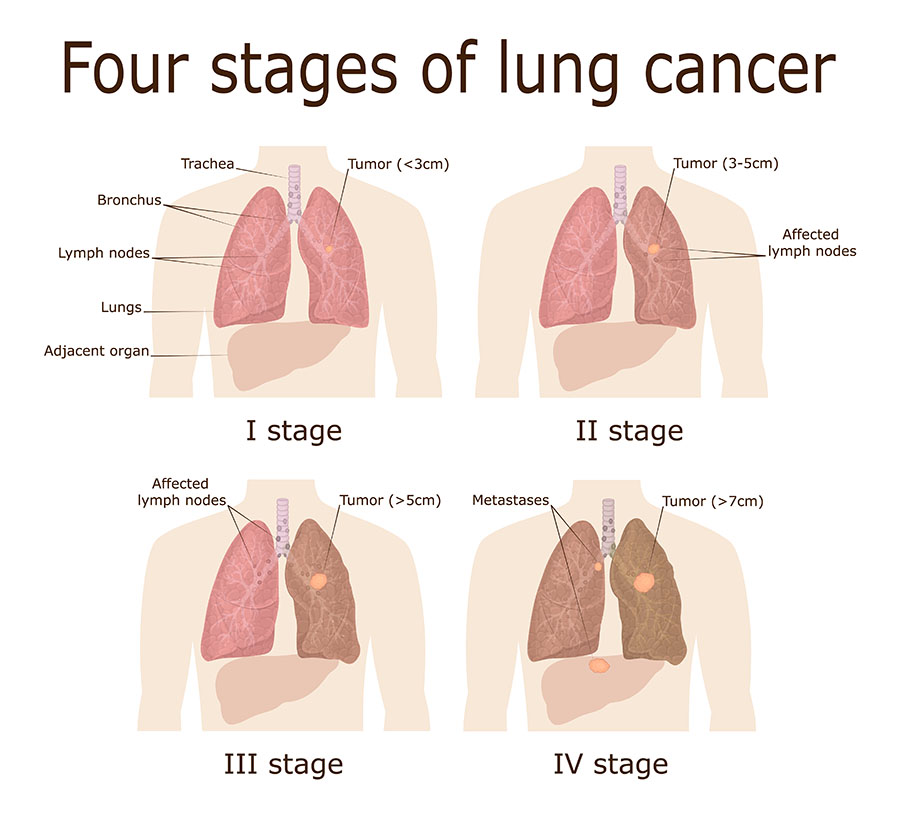
Stage 0
At this stage, the cancer is limited to the lining of the airways and hasn't entered the lung tissue, so it can usually be curable by surgery without the need for chemotherapy or radiation. Surgery involves the removal of part of the lobe of the lung, a procedure known as a lobectomy. For some, surgery may be avoided through photodynamic therapy, laser therapy, or brachytherapy.
Stage 1
Surgery is the most common treatment at this stage, also. The type of surgery depends on which parts of the lungs have been invaded by the cancer. It may require removing the lobe of the lung (lobectomy) that has the tumor or removing a smaller piece of lung, which is generally a better option for those who have other health problems that make removing an entire lobe dangerous. For tumors that are at least 4 cm across, immunotherapy and chemotherapy may be used along with surgery. If surgery is too risky because of other health issues, radiation therapy may be used instead.
Stage 2
At this stage, surgery to remove a lobe (lobectomy), part of the lung (sleeve resection), or the entire lung may be needed. Lymph nodes that are likely to have cancer are also removed. Depending on your overall health, chemotherapy or radiation therapy may be used along with or in place of surgery.
Stage 3
Treatment at this stage usually involves a combination of surgery, radiation therapy, and chemotherapy but depends on several factors, including the size of the tumor, where it's located, which lymph nodes are affected, and the patient's overall health. Treatment typically starts with chemotherapy and is followed by radiation therapy. If this isn't enough to remove the cancer, surgery may be performed.
Stage 4
At this stage, the cancer has spread to other parts of the body. Treatment depends on where it has spread (how many areas and which ones), whether the cancer cells have mutated, and the patient's overall health. Treating the cancer at this stage is difficult, but may include a combination of surgery, chemotherapy, radiation therapy, targeted therapy, photodynamic therapy, laser therapy, and immunotherapy. While it's rare that cancer at Stage 4 goes into remission, treatment can help the patients live longer and relieve symptoms.
Although lung cancer can be caused by several factors, the best way to prevent lung cancer is to not smoke or quit smoking. If you're having trouble quitting, ask your primary care physician for help. They can recommend the best method for your lifestyle and support you in your efforts.

